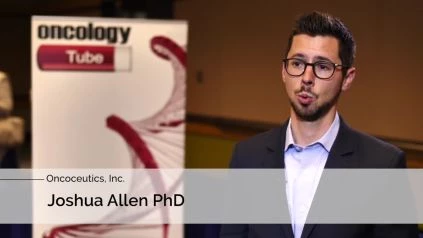Joshua Allen PhD @jallenphd Of Oncoceutics, Inc. Discusses Why Does This Subset Of Patients Respond To ONC201: It Appears To Be Very Effective In This Subset Of The Disease Because Its A Vulnerability Produced By This Mutation.
BACKROUND:
H3 K27M-mutant glioma is associated with a poor prognosis and there is no effective therapy following radiation. We report the clinical experience with single agent ONC201, the first small molecule DRD2 antagonist in oncology, in adults with recurrent H3 K27M-mutant glioma.
METHODS:
Twenty-nine adult patients with recurrent H3 K27M-mutant glioma have been treated with single agent ONC201 as of January 20, 2019: 19 patients on NCT03295396; 8 patients on NCT02525692; 2 patients on compassionate use protocols under the Sponsors IND. Median age was 57 years old (range: 17-74), median prior lines of therapy was 2 (range: 1-4) and all patients received prior radiation (median 8.5 months from radiation completion to ONC201 initiation). ONC201 was orally administered at 625 mg weekly, except for one patient dosed once every 3 weeks.
RESULTS:
As of February 5, 2019, 13 of 29 patients remain on-trial within median follow up of 6.5 months (range: 0.6-33.6), 8 patients are alive but off-trial with median follow up of 2.4 months (range: 0.2-9), and 8 patients have expired. Nine of 29 patients (31%) remain progression-free on ONC201 with a median follow up of 6.5 months (range 0.6-33.6). No dose-limiting toxicities or treatment discontinuations due to toxicity occurred. Three patients have experienced durable partial responses by RANO (4.3-28.5 months). In addition, one patient experienced complete regression that continues for > 14 months of all < 1 cm tumor lesions that are not measurable by RANO. Furthermore, 10 patients had a best response of stable disease by RANO, 12 patients experienced progressive disease, and 3 patients are not yet evaluable. Among the patients with a best response of stable disease by RANO, one patient had > 50% tumor regression in the basal ganglia that did not qualify as a partial response by RANO due to a new lesion on a confirmatory scan. Another patient with stable disease by RANO has had 37% tumor regression so far in the brainstem and remains on-treatment for 6 months. All tumor regressions remain durable to date and some were associated with improvements in disease-associated neurological symptoms.
CONCLUSIONS:
Single agent ONC201 is well tolerated and clinically active in adult recurrent H3 K27M-mutant glioma patients. Clinical trial information: NCT03295396; NCT02525692

